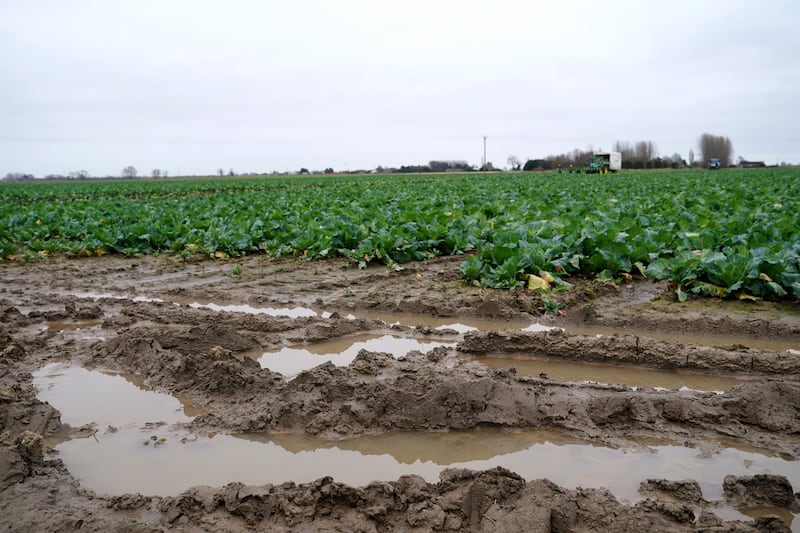The Impact Of UK Wildfires On Rare And Endangered Wildlife

Table of Contents
Habitat Loss and Fragmentation
Wildfires represent a catastrophic threat to the delicate balance of the UK's ecosystems, causing extensive habitat loss and fragmentation. Many rare and endangered species depend on specific habitats for survival, and their destruction has severe consequences.
Destruction of Crucial Habitats
Wildfires indiscriminately destroy vital habitats, including ancient woodlands, precious heathlands, and vital grasslands. These areas provide crucial resources for numerous species, and their loss directly impacts survival rates.
- Loss of nesting sites: Birds like the Dartford warbler, a UK Biodiversity Action Plan priority species, rely on specific vegetation for nesting. Wildfires eliminate these sites, directly impacting breeding success and population numbers.
- Destruction of foraging grounds: Mammals such as the pine marten, a species recovering from past decline, depend on specific habitats for foraging. The destruction of these areas reduces food availability, impacting their ability to thrive and reproduce.
- Elimination of crucial plant communities: Wildfires eliminate diverse plant communities, disrupting the intricate food webs they support. This loss has a cascading effect, particularly impacting insect populations which form the base of many food chains. The decline of specific plants also directly affects herbivores and the animals that prey on them.
Habitat Fragmentation and Isolation
Even partial burning can severely fragment habitats, creating isolated patches of remaining suitable land. This fragmentation has significant implications for wildlife populations.
- Increased vulnerability to predation: Isolated populations become more vulnerable to predation as their natural defenses, such as cover and escape routes, are reduced.
- Reduced access to food and water sources: Fragmented habitats restrict access to essential resources, leading to malnutrition, dehydration, and increased mortality, particularly among young or vulnerable individuals.
- Difficulty in finding mates: Habitat fragmentation can hinder the ability of animals to find mates, leading to lower reproductive success and a decline in genetic diversity. This reduced genetic diversity makes the remaining populations even more susceptible to disease and environmental changes.
Direct Mortality and Injury
Wildfires inflict immediate and devastating impacts on wildlife, resulting in direct mortality and injury. The intense heat, flames, and smoke pose significant threats.
Immediate Impact of Fire
The immediate impact of wildfires is often catastrophic. Animals perish from burns, smoke inhalation, and heat stress. Slow-moving or young animals are particularly vulnerable as they struggle to escape the rapidly spreading flames.
- Reptile and amphibian populations decimated: Reptiles and amphibians, with their slower movement speeds, often have limited escape options, leading to high mortality rates during wildfires.
- Increased mortality rates for young and vulnerable animals: Young animals and those already weakened by illness or injury are particularly susceptible to the deadly effects of wildfires.
- Direct burning and incineration: Many animals are directly killed and incinerated by the intense heat of the wildfires.
Long-Term Health Consequences
Even animals that survive the initial impact of a wildfire can suffer long-term health consequences that affect their survival and reproductive success.
- Reduced foraging efficiency due to injuries: Burns and other injuries sustained during wildfires can hinder an animal's ability to forage effectively, leading to malnutrition and weakening their immune system.
- Increased susceptibility to disease: Injuries and stress weaken the immune system, making survivors more susceptible to infections and diseases.
- Impaired reproductive success: Stress, injuries, and malnutrition can significantly reduce reproductive success, further hindering population recovery.
Impact on Specific Endangered Species
The impacts of UK wildfires are particularly devastating for already endangered species, pushing some closer to the brink of extinction.
Case Studies
Several endangered UK species are highly vulnerable to the effects of wildfires.
- Red Squirrels: Wildfires destroy their woodland habitats, reducing food sources and nesting sites, impacting their already fragile populations.
- Nightjars: These birds rely on specific heathland habitats for nesting and foraging. Wildfires destroy these crucial habitats, leading to a decline in breeding success.
- Sand Lizards: These rare reptiles are highly susceptible to direct mortality from wildfires due to their slow movement and dependence on specific open heathland habitats.
The Role of Climate Change in Increasing Wildfire Risk
Climate change significantly contributes to the increasing frequency and intensity of UK wildfires, creating a vicious cycle that threatens biodiversity.
Increased Frequency and Intensity
Rising temperatures and prolonged periods of drought create ideal conditions for wildfires to ignite and spread rapidly.
- Higher temperatures and drier conditions: Climate change leads to hotter, drier summers, increasing the flammability of vegetation and extending the wildfire season.
- Longer dry periods: Increased periods of drought dry out vegetation, making it more susceptible to ignition and allowing fires to spread quickly and intensely.
- Changes in precipitation patterns: Changes in rainfall patterns, including more intense downpours followed by prolonged dry spells, exacerbate the risk of wildfires.
Long-Term Implications
The long-term implications of increasing wildfire risk are deeply concerning for the UK's biodiversity and ecosystem stability.
- Threat to already vulnerable ecosystems: Wildfires pose a major threat to already vulnerable ecosystems, potentially pushing them beyond their capacity to recover.
- Accelerated biodiversity loss: The increasing frequency and intensity of wildfires accelerate biodiversity loss, potentially leading to the extinction of rare and endangered species.
- Increased pressure on conservation efforts: The escalating wildfire threat puts immense pressure on conservation efforts, requiring increased resources and strategies for wildfire prevention, habitat restoration, and species protection.
Conclusion
UK wildfires pose a significant and escalating threat to rare and endangered wildlife, causing widespread habitat loss, direct mortality, and long-term health problems. The increasing frequency and intensity of wildfires, exacerbated by climate change, demand urgent action. Understanding the devastating impact of UK wildfires on endangered wildlife is crucial for the development of effective conservation strategies. We must support initiatives focused on wildfire prevention, habitat restoration, and targeted species protection to safeguard the UK's invaluable biodiversity. Learn more about how you can help protect endangered wildlife from the devastating effects of UK wildfires. Support organizations dedicated to wildlife conservation and fire prevention. Let's work together to mitigate the impact of UK wildfires and protect our vulnerable species.

Featured Posts
-
 Chronological Doom Game Order The Ultimate Playing Guide
May 13, 2025
Chronological Doom Game Order The Ultimate Playing Guide
May 13, 2025 -
 Ncaa Tournament Oregon Ducks Lose To Duke
May 13, 2025
Ncaa Tournament Oregon Ducks Lose To Duke
May 13, 2025 -
 Dzherard Btlr I Blgariya Snimka Koyato Razchuvstva Sveta
May 13, 2025
Dzherard Btlr I Blgariya Snimka Koyato Razchuvstva Sveta
May 13, 2025 -
 Analisis Permainan Jay Idzes Di Laga Venezia Vs Atalanta Dampaknya Bagi Timnas Indonesia
May 13, 2025
Analisis Permainan Jay Idzes Di Laga Venezia Vs Atalanta Dampaknya Bagi Timnas Indonesia
May 13, 2025 -
 Obituaries Saying Goodbye To Our Neighbors
May 13, 2025
Obituaries Saying Goodbye To Our Neighbors
May 13, 2025
